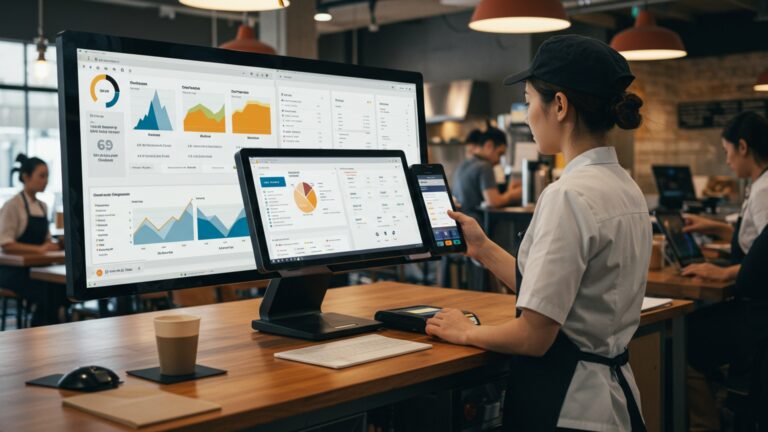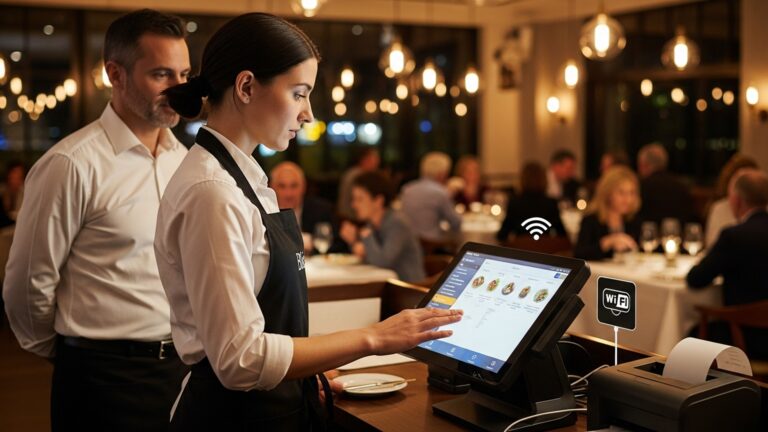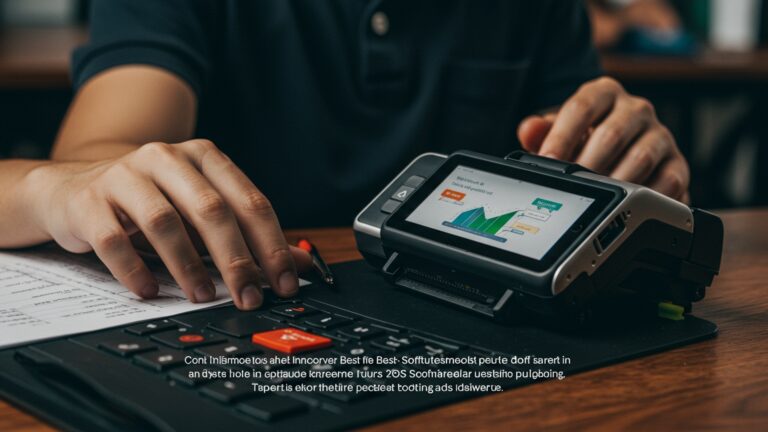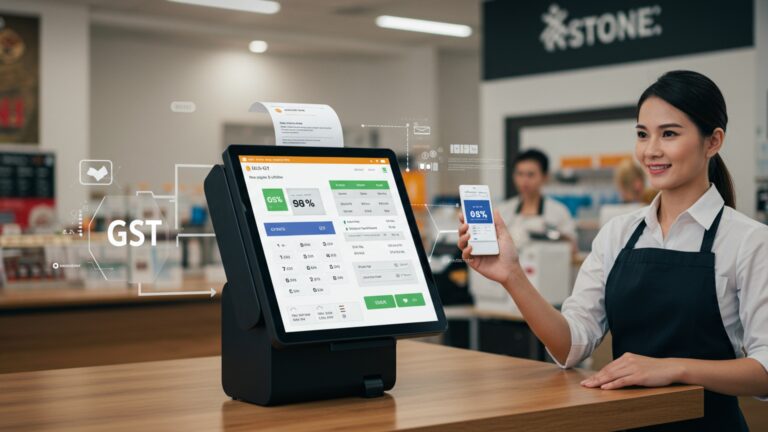How to Master Restaurant POS for Seamless Billing and Order Management
The modern restaurant landscape demands more than just taking orders; it requires a robust technological backbone to thrive. A sophisticated restaurant POS with billing and order management system is no longer a luxury but a critical operational hub. Consider the seamless flow enabled by integrated Kitchen Display Systems during peak dinner service, or the instant inventory updates that prevent stockouts of popular specials. Recent developments in cloud-based platforms and AI-powered analytics transform raw transaction data into actionable insights, driving smarter menu engineering and labor scheduling. Mastering this central nervous system ensures swift, accurate billing, enhances customer satisfaction with features like tableside ordering. ultimately boosts profitability in a competitive market.

The Foundation: Understanding Restaurant POS for Modern Operations
A modern restaurant thrives on efficiency, accuracy. an exceptional customer experience. At the heart of achieving this lies a robust Point of Sale (POS) system. Far from being just a cash register, a restaurant POS is an integrated hardware and software solution designed to streamline every aspect of a restaurant’s operations, from the moment an order is placed to when the final payment is processed. Specifically, a comprehensive restaurant POS with billing and order management system acts as the central nervous system, connecting front-of-house (FOH) and back-of-house (BOH) operations seamlessly. It’s the digital backbone that empowers staff to take orders, customize them, process payments, manage tables, track inventory. generate crucial business reports. Without a well-mastered POS, restaurants risk slow service, billing errors, inventory discrepancies. ultimately, a frustrated customer base. Think of it as the mission control for your restaurant, orchestrating every interaction and transaction with precision.
Essential Features for Seamless Billing and Order Management
To truly master your restaurant POS, it’s vital to interpret the core features that drive its value. These functionalities are engineered to enhance both the customer experience and operational efficiency.
- Intuitive Order Taking & Customization
- Kitchen Display Systems (KDS) & Printer Integration
- Advanced Billing & Payment Processing
- Split Bills
- Diverse Payment Options
- Tip Management
- Digital Receipts
- Inventory Management Integration
- Customer Relationship Management (CRM) Capabilities
- Robust Reporting & Analytics
This is where the magic begins. A good POS allows servers to quickly input orders, modify items (e. g. , “no onions,” “extra cheese”), apply special instructions for the kitchen. manage different courses. Many systems now offer visual menu interfaces, making training easier and reducing errors.
Once an order is entered, it needs to reach the kitchen or bar instantly. KDS screens replace traditional paper tickets, displaying orders clearly, allowing chefs to manage prep times, mark items as complete. ensure orders are served in the correct sequence. For establishments preferring printouts, seamless integration with kitchen and bar printers ensures timely and accurate communication.
This feature is critical for a smooth customer checkout. A sophisticated restaurant POS with billing and order management facilitates:
Effortlessly divide a check by item or amount among multiple diners.
Accept credit/debit cards (EMV chip cards), contactless payments (NFC like Apple Pay, Google Pay), gift cards. even integrated online payment platforms. EMV (Europay, MasterCard. Visa) is a global standard for chip-based payment cards, enhancing transaction security.
Easy addition and management of tips for staff.
Offer email or SMS receipts for convenience and eco-friendliness.
While some basic POS systems offer rudimentary inventory tracking, advanced ones integrate deeply. They deduct ingredients from stock as dishes are sold, trigger alerts for low stock. help calculate food costs. This is crucial for controlling waste and optimizing purchasing.
Beyond transactions, a powerful POS can capture customer data, track preferences, manage loyalty programs. store order history. This allows for personalized marketing efforts and repeat business.
This is where you gain insights into your business performance. A good POS generates detailed reports on sales (by item, category, server, time of day), popular dishes, labor costs. more. These insights are invaluable for making data-driven decisions.
Types of Restaurant POS Systems: Cloud vs. On-Premise
When selecting a restaurant POS, one of the primary decisions revolves around its deployment model: cloud-based or on-premise. Each has distinct advantages and disadvantages that can significantly impact your operations.
| Feature | Cloud-Based POS | On-Premise POS |
|---|---|---|
| Definition | Software hosted on remote servers, accessed via the internet. Data stored in the cloud. | Software installed directly on local hardware (servers) within the restaurant. Data stored locally. |
| Cost Structure | Typically subscription-based (monthly/annual fees). Lower upfront cost. | Higher upfront cost for software license and hardware. Lower ongoing fees (maintenance). |
| Accessibility | Accessible from anywhere with an internet connection (mobile devices, tablets). Ideal for multi-location businesses. | Primarily accessible on-site. Remote access often requires specific network configurations. |
| Updates & Maintenance | Automatic updates, managed by the vendor. Less IT burden. | Manual updates, managed by the restaurant or an IT technician. More control over update timing. |
| Data Security | Vendor responsible for security, often with robust protocols and backups. Requires trust in the vendor. | Restaurant responsible for data security and backups. More control but higher responsibility. |
| Offline Capability | Some offer limited offline mode, syncing data when connectivity returns. Reliability dependent on internet. | Fully functional without internet, as data is local. More resilient to internet outages. |
| Scalability | Easily scalable, adding terminals or locations often just means adding subscriptions. | Scaling requires additional hardware and software licenses, potentially more complex. |
| Real-World Use Case | A fast-growing café chain needs to manage multiple locations and desires remote access to sales data. | A well-established fine dining restaurant prioritizes local control over data and has dedicated IT staff. |
Choosing between the two depends on your restaurant’s specific needs, budget, technical capabilities. desire for control versus convenience. Many modern establishments gravitate towards cloud-based solutions for their flexibility and lower upfront investment, especially when looking for a comprehensive restaurant POS with billing and order management that can scale.
Implementing and Optimizing Your Restaurant POS
Acquiring a POS system is just the first step; mastering it requires careful implementation and ongoing optimization.
- Choosing the Right System
- Specific Restaurant Type
- Scalability
- Integration Capabilities
- Ease of Use
- Customer Support
- Effective Staff Training
- Meticulous Menu Setup and Pricing
- Data Security and Backup Protocols
- Leveraging Reports for Business Growth
This is paramount. Don’t just pick the cheapest or most popular option. Evaluate systems based on:
A quick-service restaurant (QSR) needs different features than a fine dining establishment.
Can it grow with your business?
Does it integrate with your existing accounting software, online ordering platforms, or loyalty programs?
Is it intuitive for your staff?
What kind of support does the vendor offer (24/7, online, phone)?
Even the most advanced POS is useless if staff don’t know how to use it. Invest in thorough, hands-on training for all team members. Create simple cheat sheets for common tasks. Regular refreshers are also beneficial. A common pitfall is inadequate training, leading to frustration and underutilization of features.
Accurately input all menu items, modifiers, pricing. tax settings. This often requires careful planning to ensure every possible permutation of an order is accounted for. For instance, clearly defining how “add chicken” or “substitute fries for salad” affects pricing and inventory.
Regardless of whether you choose cloud or on-premise, implement strong security measures. Use secure passwords, restrict access levels. ensure regular data backups. For cloud POS, confirm the vendor’s security protocols and compliance (e. g. , PCI DSS for payment processing).
Don’t just collect data; assess it. Use sales reports to identify peak hours, best-selling items. staff performance. For example, if your POS reports show a significant drop in beverage sales on Tuesdays, you might consider a “Tuesday drink special” to boost revenue. This is where your restaurant POS with billing and order management truly becomes a strategic asset.
Advanced Strategies for Seamless Operations
To truly elevate your restaurant’s efficiency and customer satisfaction, consider integrating advanced POS strategies.
- Integration with Third-Party Applications
- Online Ordering Platforms
- Reservation Systems
- Delivery Services
- Accounting Software
- Utilizing Handheld Devices for Tableside Ordering
- Proactive Troubleshooting and Maintenance
- Data-Driven Menu Engineering
Modern POS systems are designed to be ecosystem-friendly. Integrate with:
Seamlessly push online orders directly to your POS and KDS.
Connect table management with incoming reservations.
Manage orders from platforms like Uber Eats or DoorDash directly through your POS, avoiding manual re-entry.
Export sales data directly to QuickBooks or Xero, simplifying bookkeeping.
This interoperability reduces manual tasks, minimizes errors. creates a unified operational flow. For example, a restaurant manager noticed a surge in phone orders during lunch. By integrating a basic online ordering system with their restaurant POS with billing and order management, they could redirect customers online, freeing up staff to focus on in-house diners and reducing order errors.
Equipping servers with tablets or handheld devices connected to the POS system allows for tableside ordering and payment processing. This not only enhances the customer experience with faster service but also reduces order errors and speeds up table turnover. Servers can send orders directly to the kitchen, split bills on the spot. process payments without leaving the table.
Treat your POS system like any other critical piece of equipment. Schedule regular software updates, check hardware (printers, card readers) for wear and tear. have a clear troubleshooting protocol for common issues. Knowing who to call (your POS vendor support) and having backup plans (e. g. , a manual order pad for internet outages) is crucial.
Beyond simple sales reports, use your POS data to strategically design your menu. Identify high-profit, high-popularity items (stars), low-profit, high-popularity items (plows), etc. Adjust pricing, placement on the menu, or even recipe ingredients based on these insights to maximize profitability. This isn’t just about selling; it’s about selling smarter.
Conclusion
Mastering your restaurant POS system transcends mere transaction processing; it’s about orchestrating a symphony of efficiency, accuracy. customer satisfaction. Beyond merely inputting orders, true mastery involves leveraging its analytical capabilities for menu optimization, staff performance tracking. understanding peak service times. My personal tip: empower your front-of-house team with thorough, ongoing training, transforming them into “POS power users” who can confidently navigate even complex orders, significantly reducing errors and enhancing guest experience. Embrace current trends like tableside ordering via handheld devices and integrated loyalty programs, turning your POS into a dynamic hub for customer engagement. Remember, a well-utilized POS is your restaurant’s central nervous system, ensuring every interaction, from selecting essential functionalities to final payment, is seamless. Don’t just use your POS; dominate it. Your commitment to mastering this vital tool is a strategic investment that will continually propel your restaurant toward unparalleled operational excellence and sustained profitability.
More Articles
How to Choose the Best POS System 5 Key Strategies for Restaurant Success
Discover 7 Essential Restaurant POS Features to Boost Your Business Efficiency
Are You Using Your Restaurant POS Software Effectively Discover 8 Smart Strategies
Master 8 Ways Restaurant POS Software Enhances Customer Experience and Loyalty
Mastering Restaurant Operations 10 Features Your POS Software Must Have
FAQs
What exactly is a restaurant POS system and why is it such a big deal?
A POS (Point of Sale) system in a restaurant is the central hub for all transactions. Think of it as your digital cash register, order taker. manager all rolled into one. It’s a big deal because it handles everything from taking customer orders, sending them to the kitchen, processing payments, managing tables. even tracking inventory. A good one makes your operations smoother, faster. much more accurate, which is crucial for a busy restaurant.
I want to master our restaurant’s POS. Where do I even start to become a pro?
The best way to master it is hands-on practice, practice, practice! Spend time exploring every menu and feature when it’s not busy. Watch training videos if your system has them. don’t be afraid to ask experienced colleagues or your POS vendor for tips. grasp not just how to do something. why you’re doing it a certain way. Knowing shortcuts and common scenarios will make you super efficient and confident during service.
What are the usual screw-ups people make with POS systems. how do we steer clear of them?
Common mistakes include incorrect order entry (wrong modifier, wrong table), forgetting to apply discounts, making payment errors, or not closing out tables properly. To avoid these, always double-check orders before sending them, confirm payment methods with customers. review your shift report for discrepancies. Regular staff training and clear, simple procedures for specific scenarios (like splitting checks or combining tables) are crucial.
Can a POS actually help us manage orders better and make our customers happier?
Absolutely! A good POS streamlines order taking by sending orders directly to the kitchen display system (KDS) or printer, reducing errors and speeding up prep time. It can manage table statuses, track order progress. help staff quickly recall customer preferences or special requests. Faster, accurate service with fewer mistakes directly translates to happier customers who feel well-served and are more likely to return.
What POS features should I really focus on to make billing lightning fast?
To speed up billing, concentrate on features like quick-pay options (splitting checks, combining payments), integrated payment processing (EMV, contactless). efficient table management. Learn shortcuts for applying discounts or comps. how to quickly look up items. Also, ensure your menu is well-organized with clear categories and subcategories to minimize search time during checkout, especially during peak hours.
How can I effectively train my team on the POS so everyone’s consistent and knows their stuff?
The best approach is a structured training program that combines hands-on practice with clear, written guides. Start with basic functions, then move to more complex scenarios like modifiers, splitting checks. returns. Use your actual menu items for practice. Implement regular refreshers, create a ‘cheat sheet’ for common tasks. encourage peer-to-peer learning. Consistency comes from everyone understanding and following the same procedures.
Beyond just taking orders, how can our POS system help us keep a better eye on sales and what’s in stock?
A good POS system is a treasure trove of data. It automatically tracks every sale, giving you real-time insights into your best-selling items, peak hours. server performance. For inventory, it can deduct ingredients from stock as dishes are sold (if integrated), alert you when items are running low. help you manage suppliers. This data is invaluable for making smarter purchasing decisions, optimizing your menu. preventing waste, ultimately boosting your bottom line.





